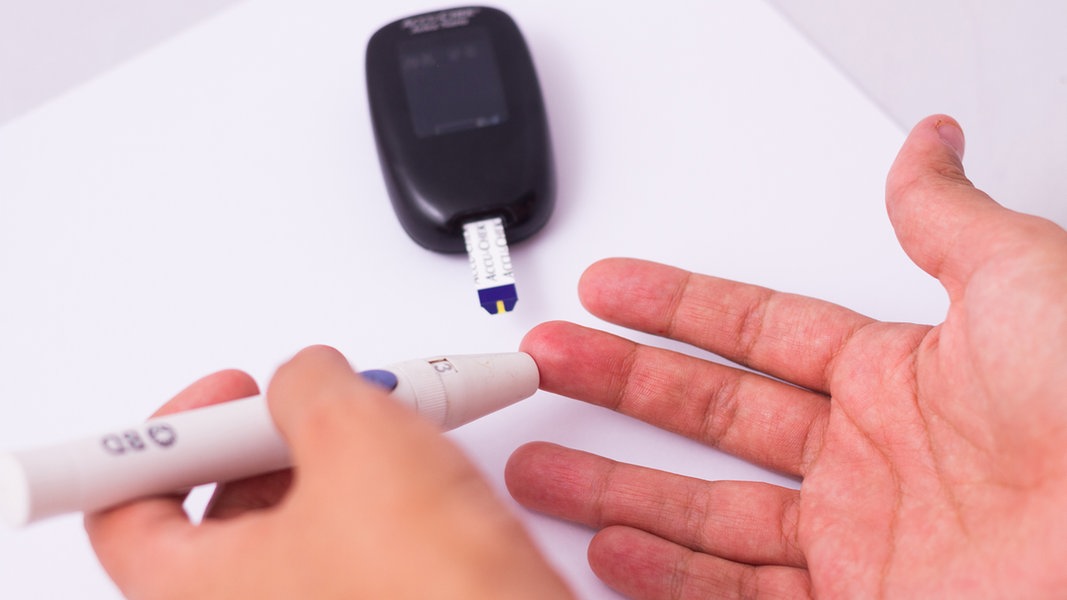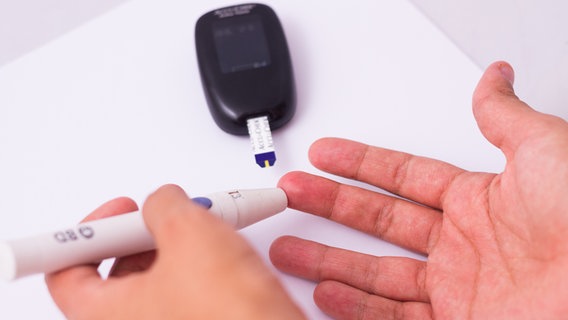Status: 02/24/2023 11:33 a.m
Prediabetes is a precursor to diabetes: those affected have abnormal sugar levels and usually no other symptoms. Depending on the subtype, however, there are already serious health consequences at this stage.
Around 10 percent of adults in Germany suffer from type 2 diabetes, and another 20 percent have it According to the RKI, a preliminary stage of it: the so-called prediabetes. Elevated blood sugar levels are a mass phenomenon. But most people do not suspect anything of their risk, because there are no noticeable signs – prediabetes is not noticeable in everyday life. It is therefore often only discovered during a blood test during a routine check. But what does that mean when the laboratory test says: “Your sugar is borderline”?
Diagnosis of prediabetes: limits for blood sugar
There is a gray area between normal blood sugar levels and the level at which diabetes is diagnosed. Three different blood values from the sugar metabolism can be measured – if even one of these sugar values is in the elevated range, prediabetes is already present:
Fasting blood glucose (as defined by the American Diabetes Association – ADA)
- normal: below 100 mg/dl (below 5.6 mmol/l)
- Prädiabetes: 100-125 mg/dl (5,6-6,9 mmol/l)
- Diabetes: ab 126 mg/dl (ab 7 mmol/l)
Glucose tolerance score after drinking a standardized sugar solution
- normal: below 140 mg/dl (below 7.8 mmol/l)
- Prädiabetes: 140-199 mg/dl (7,8-11,0 mmol/l)
- Diabetes: ab 200 mg/dl (ab 11,1 mmol/l)
Long-term blood glucose (HbA1c)
- Prädiabetes: 5,7-6,4 % (39-47 mmol/mol)
- Diabetes: ab 6,5 % (48 mmol/mol)
What is the risk of prediabetes?
On the one hand, prediabetes does not necessarily turn into diabetes with all its harmful consequences for blood vessels, liver, heart and eyes. On the other hand show current findings from research that the health effects of the pre-diabetes stage have so far been significantly underestimated. In some cases, serious complications in the cardiovascular system and kidneys can already occur at this stage, which significantly reduce life expectancy. As a Long-term study shows that the prognosis depends on the prediabetes subtype.
Further information
Three high-risk types in prediabetes
Researchers have defined six subtypes of prediabetes based on the accompanying factors – such as family history, weight, percentage of abdominal fat, liver fat, blood lipid levels, insulin production and insulin action. Their risk is significantly different. Three subtypes are particularly at risk:
Prediabetes-Type 3:
Characteristics: high family predisposition, abdominal obesity, low insulin secretion (can be determined by a C-peptide test by the family doctor). Risk: People with this prediabetes subtype often develop diabetes and cardiovascular damage within a short period of time. Their risk of kidney damage is also slightly increased.
Prediabetes-Type 5:
Characteristics: obesity, fatty liver (palpable or detectable by ultrasound), insulin resistance. Risk: Type 5 people are at high risk for diabetes and cardiovascular damage, as well as kidney damage. As a result, their life expectancy is significantly lower.
Prediabetes-Type 6:
Characteristics: abdominal obesity and fat deposits in the kidneys (detectable by ultrasound or MRI). Risk: In people with subtype 6, the kidneys are already severely damaged in the prediabetes stage. This massively increases their risk of death, even if their risk of diabetes is relatively moderate.
What all three high-risk types have in common is overweight with accumulations of fat in the body abdomen and/or on the organs. The less vulnerable prediabetes subtypes (1, 2 and 4) are slim or overweight but with a different fat distribution.
Prediabetes reversible with proper treatment
The good news for those affected by prediabetes: a weight loss of five to ten percent is often enough to significantly improve the sugar metabolism and get out of the danger zone. This can be achieved through consistent lifestyle changes, in particular a suitable diet (with fewer carbohydrates and long meal breaks or intermittent fasting) and increased everyday exercise: walking, cycling, climbing stairs. Because right at the beginning of the weight loss, the body is already breaking down fat in the liver and muscles, so that the insulin from the pancreas can work better again and lower the blood sugar level. The first results of large-scale The PLIS study by the German Center for Diabetes Research indicates that the amount of exercise in particular should be significantly increased and that intensive individual coaching over a year effectively helps those affected to change their lifestyle in a health-effective manner.
Important: early detection of risk types
In order to be able to take countermeasures in good time with lifestyle changes, offers for early detection are extremely important. As research shows, even prediabetes is sometimes associated with an increased burden of disease and an increased risk of death. Above all, people who are obese should have their sugar levels tested, especially if they have additional risk factors such as first-degree relatives with diabetes. People with cardiovascular diseases and women who have been diagnosed with gestational diabetes should also keep a close eye on their sugar levels.
experts on the topic
Further information







